Main menu
Common skin conditions

NEWS
Join DermNet PRO
Read more
Quick links
Author: Dr Todd Gunson, Dermatology Registrar, Dept of Dermatology, Greenlane Hospital, Auckland, New Zealand, 2007.
Henoch–Schönlein purpura (HSP) is a form of leukocytoclastic or small-vessel vasculitis, most often observed in children. It is sometimes called anaphylactoid purpura.
HSP results from inflammation of the small blood vessels in the skin and various other tissues within the body.
HSP generally affects children, but it may also occur in adult life. The most common symptoms include a vasculitic rash, joint pain, and abdominal pain. It may affect the kidneys and in some instances, this leads to irreversible kidney damage. However, most cases resolve without treatment or long-term consequences.
75% of cases occur in children under the age of 10 years. It is thought by most researchers to be more common in girls, although some have found a male predominance or both sexes to be equally affected. HSP may occur in adults and when it does, it is often more severe and kidney damage is more common than is the case in children. There does not appear to be any racial predilection. The incidence in the UK is approximately 20/100000 children (under 17 years old) per year and the incidence of HSP thought to be similar in New Zealand.
15 to 40% of children have at least one recurrence.
Although the precise cause of HSP is unknown, clinical evidence points to an infectious aetiology. The peak incidence of paediatric HSP is during the autumn and winter months. It often preceded by an upper respiratory tract infection and is found to cluster within families. Beta-haemolytic streptococci are often found on throat swab or there is positive streptococcal serology on blood testing.
A multitude of other associations has been reported, including medications. These include ACE inhibitors, angiotensin II receptor antagonists, clarithromycin and nonsteroidal anti-inflammatories.
The underlying mechanism of small blood vessel inflammation is the deposition of IgA immunoglobulin within the blood vessel walls. This leads to leukocytoclastic vasculitis. A subtle defect of IgA may predispose people to develop HSP.
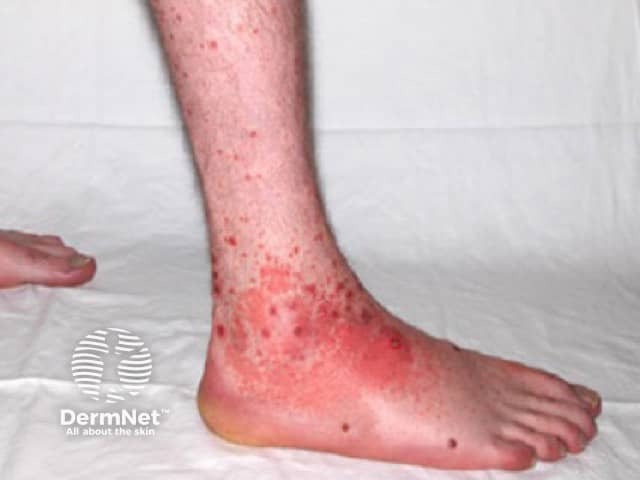
Classical purpura
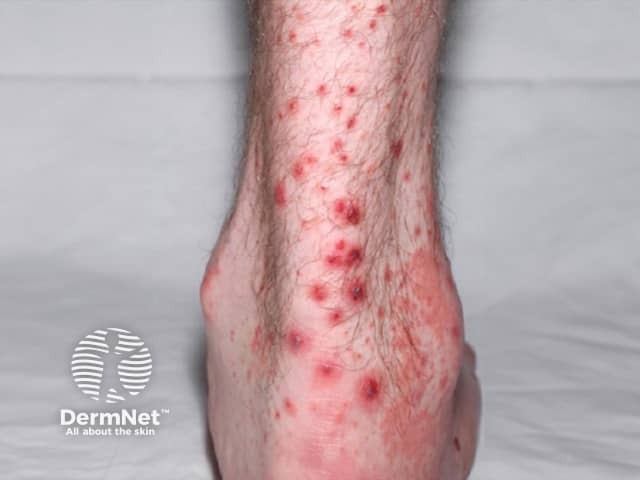
Ankle swelling (arthritis)
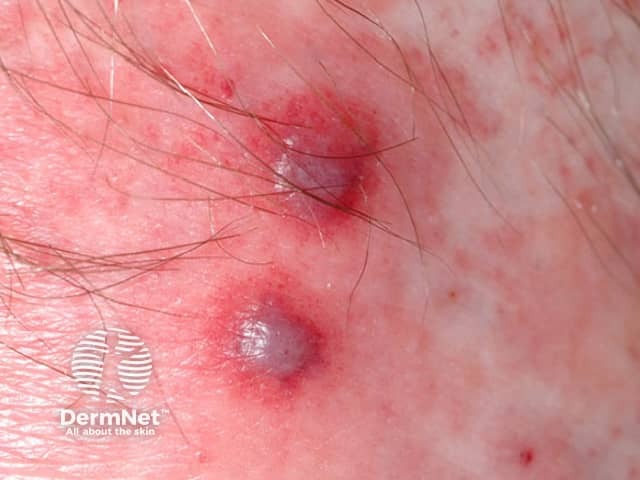
Close-up of purpuric rash with vesicle (blister) formation
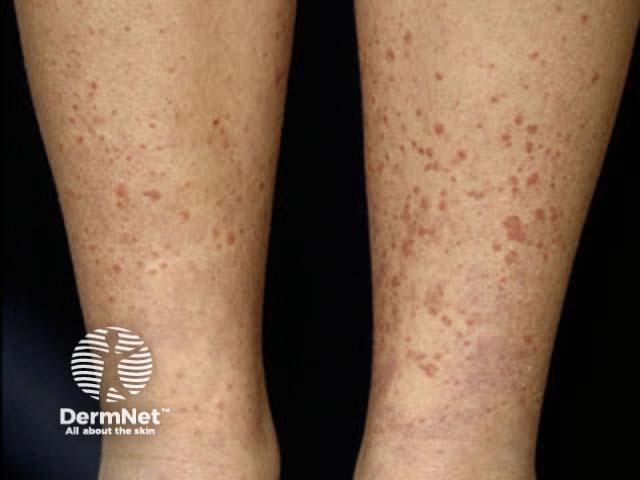
Henoch-Schönlein purpura
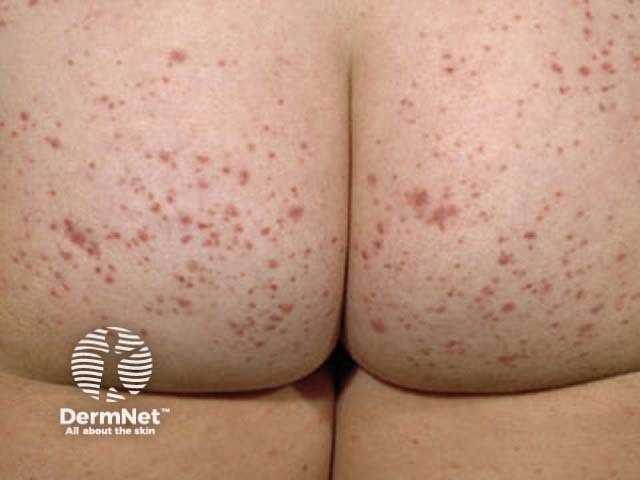
Henoch-Schönlein purpura

Henoch-Schönlein purpura
The classic presentation of HSP is with a tetrad of symptoms and signs:
The symptoms are usually preceded by 2–3 weeks of fever, headache, muscle/joint aches, or abdominal pain.
A rash is present in virtually all cases. It usually starts as red spots or bumps (which may have a ‘hive-like’ appearance) which rapidly change to small dark purple bumps (palpable purpura) within the first 24 hours. The most common sites of involvement are the lower legs, buttocks, elbows and knees. The rash is symmetrical and may even become generalised. Blisters and/or ulcers may develop in the affected areas.
Arthritis is present in 75% of cases and usually involves one to four joints, especially the ankles and knees. It may be transient and move between different joints.
Abdominal pain is present in half to three-quarters of patients and precedes the rash in up to one third. Abdominal pain may be associated with diarrhoea and bleeding from the bowel. Orchitis and intussusception are possible complications.
Kidney involvement is seen in up to 50% of cases. It is usually mild and self-limiting, however, it is important that it is diagnosed and followed up as persistent impairment may occur. It normally occurs within a few days to one month after the onset of the other symptoms. Approximately 10% have serious kidney problems at presentation, 15% are left with subtle abnormalities in their urine tests, and 1–5% progress to end-stage kidney failure long term.
Rarely other organs, such as the lungs, brain, and heart, are involved.
The diagnosis of HSP is often obvious if the classic symptoms are present.
In the majority of cases, no specific treatment is required for HSP and the rash fades over one week. Recurrent crops of lesions occur over the next 6–16 weeks in up to one-third of cases. Five to ten per cent may have persistent disease.